Recommended
- SUMMARY OF PHILOSOPHY OF EDUCATION 2022
- How To Correct The Point of Your Salary Level On Your Payslip Which Fails To Move Upwards
- CHECK OUT WHEN GHANA SCHOLARSHIP WILL BE OUT
- VICE CHANCELLOR’S SCHOLARSHIP FOR AAMUSTED STUDENTS
1. Inclusive School-Based Enquiry is a course which seeks to……………………….
a) address only learning disabilities of pupils in the school.
b) discover poor practices in the classroom and not do anything about them.
c) address learner diversity in inclusive classrooms and to create equitable opportunities for all learners to achieve their possible best regardless of their diversity.
d) equip student teachers with skills to be able to handle only pupils with multiple disabilities.
2. All the following are characteristics of inquiry-based learning except……
a) students gain a deeper understanding of the subject matter.
b) learning is essentially student-centered with an emphasis on group work.
c) lecturers become facilitators providing encouragement and support to enable the students to take responsibility for what and how they learn.
d) students are spoon fed with information on the subject by the lecturer.
3. It is a systematic approach to identifying learner needs and using various interventions to meet those needs of the child.
a) Diversity
b) Equity
c) Child study
d) Inclusivity
4. One of the ways by which a physically disabled child can be identified in the classroom is………………………..
a) a child having an unusual gait or difficulty with hopping, skipping, running, or jumping.
b) a child having medicine that must be taken during the school day.
c) a child having the difficulty understanding how things work.
d) a child being restless.
5. During classroom observation, a teacher notes whether a particular characteristic is present or absent by using one of the following.
a) Rating scales
b) Anecdotal records
c) Measurement scales
d) Checklist
6. An observational recording technique in which the observer measures the time between a request for a behavior and an actual response by a child is known as?
a. Event sampling observation
b. Latency recording
c. Target child observation
d. Time sampling observation
Recommended
- SUMMARY OF PHILOSOPHY OF EDUCATION 2022
- How To Correct The Point of Your Salary Level On Your Payslip Which Fails To Move Upwards
- CHECK OUT WHEN GHANA SCHOLARSHIP WILL BE OUT
- VICE CHANCELLOR’S SCHOLARSHIP FOR AAMUSTED STUDENTS
7. Which one of the following is the focus of a teacher’s observation in the classroom?
a. Learning skills
b. Behavior
c. Inclusivity
d. Progress in learning
Which one of the following is important in guiding the teacher on how to manage children’s behaviour problems in the classroom?
A. Antecedent(s) of the behaviour
B. Key needs of the child
C. Consequence(s) of the behavior
D. The behavior itself
9. The type of observation which permits a researcher to participate in the activity being observed is known as……………
A. Simulation
B. Naturalistic observation
C. Participant observation
D. Complete observation
10. All of the following are guidelines for observing in the classroom by beginning teachers as well as researchers except…………
A. Attend only to observable behaviours
B. Increase complexity by focusing observations
C. Become aware of one’s values, attitudes and conceptual blinders
D. Make careful arrangement with teachers prior to observation
11. A data collection tool which assists the student teacher and other researchers to determine areas of successful performance and areas where the pupil might require assistance is known as…………
A. Tally
Sheet
B. Work sample
C. Anecdotal records
D. Observation checklist
12. A data collection tool which allows the student teacher to list all the behaviours or tasks a pupil is expected to perform within a specified period and ticks the behaviours as they get exhibited by the pupil is known as………………
A. A behavioural checklist
B. A Rating scale
C. Time and motion log
D. Running records
13. A student teacher’s reflective notes taken during Supported Teaching in Schools (STS) are written in a document called…………….
A. Teaching portfolio
B. Student reflective journal
C. Field note book
D. Anecdotal record book
14. A classroom-based interventional strategy whereby a teacher breaks a task into teachable units and teach bit by bit to ensure easy understanding of pupils is termed……………..
A. Behaviour modification
B. Collaborative learning
C. Project-based learning
D. Task analysis
15. All of the following are assistive devices for learners with special educational needs except………….
A. Prosthesis
B. Hearing aids
C. Lenses
D. Exercise books
Recommended
- SUMMARY OF PHILOSOPHY OF EDUCATION 2022
- How To Correct The Point of Your Salary Level On Your Payslip Which Fails To Move Upwards
- CHECK OUT WHEN GHANA SCHOLARSHIP WILL BE OUT
- VICE CHANCELLOR’S SCHOLARSHIP FOR AAMUSTED STUDENTS
16. A form of written language for people with blindness in which characters are represented by patterns of raised dots that are felt with fingertips is called……………
A. Snellen chart
B. Stylus and slate
C. Braille
D. Lenses
17. Totally blind pupils will require instruction in the use of …………………to be able to read and write.
A. Magnifier
B. Lenses
C. Large print text
D. Braille
18. Children who experience delays or deficits in gross and fine motor development are said to have……………..disorders.
A. Behavioural
B. Chromosomal
C. Physical
D. Psychic
19. Which of the following is an electronic instrument used to help the hearing impaired to learn speech sounds?
A. A hearing aid
B. A speech training unit
C. An audiometer
D. An otoscope
20. The type of education delivery model where exceptional children attend neighbourhood schools with their age and grade peers is known as……………..
A. Home bound school
B. Inclusive education
C. Segregated schools
D. Special education
21. Which of the following factors can be a cause of mental retardation?
A. Lack of teacher commitment
B. Low intake of calcium by pregnant women
C. Lack of oxygen supply to the fetus at birth
D. Sickle cell anaemia
22. A child who exhibits great abilities in artistic areas such as painting and dancing is said to be…..
A. Intellectually gifted
B. Intellectually sub-normal
C. Socially skilful
D. Talented
Recommended
- SUMMARY OF PHILOSOPHY OF EDUCATION 2022
- How To Correct The Point of Your Salary Level On Your Payslip Which Fails To Move Upwards
- CHECK OUT WHEN GHANA SCHOLARSHIP WILL BE OUT
- VICE CHANCELLOR’S SCHOLARSHIP FOR AAMUSTED STUDENTS
23. Abdulai does not respect anyone, does not obey school rules and does not carry out simple instructions. He can therefore be said to have a/an………….disorder.
A. behavior
B. interaction
C. personality
D. socialization
24. A device which is used to help a child with amputated legs to walk is known as………………….
A. audiometer
B. hearing aid
C. prosthesis
D. Speech training unit
25. Which one of the following factors is considered in determining whether a child has behaviour disorders?
A. Comparison of the learning and other behaviours of the child
B. Consistency of the child’s behaviour
C. Regularity of complaints about the child’s behaviour
D. The ethnic norms of the child
26. If most of the people Yahaya speaks to do not of ten understand him, then Yahaya is having…………. disorder.
A. communication
B. hearing
C. multiple
D. vocal
27. Kofi is a gifted and talented child. He is expected to demonstrate all the following characteristics except…………
A. a high level of task commitment
B. an above – average general ability
C. creativity
D. participating in routine activities
28. A collection of documents of a student teacher or graduate teacher indicating his/her teaching responsibilities, philosophy, and accomplishments is known as…………..
A. work plan
B. teaching portfolio
C. assessment plan
D. reflective journal
29. All the following tools can be used to evaluate interventional strategies used by student teachers to help pupils overcome their learning barriers except………
A. interview
B. observation
C. test
D. hearing aid
Recommended
- SUMMARY OF PHILOSOPHY OF EDUCATION 2022
- How To Correct The Point of Your Salary Level On Your Payslip Which Fails To Move Upwards
- CHECK OUT WHEN GHANA SCHOLARSHIP WILL BE OUT
- VICE CHANCELLOR’S SCHOLARSHIP FOR AAMUSTED STUDENTS
30. The following terms are given to the model of progression for student teachers in Supported Teaching in Schools (STS)except………
A. embedding teaching
B. developing teaching
C. beginning teaching
D. graduating teaching
31. State the exact behaviour of the child recounting his/her experience in the classroom.
A. He/She is not happy because his/her teachers have let him/her down.
B. He/she thinks his/her teachers are truly concern about his/her plight.
C. The child thinks he/she can do something about his/her learning difficulty.
D. The child thinks the school cannot do anything about his/her plight.
32. What type of educational practice is the child’s school or teachers rolling out?
A. Inclusion
B. Equity
C. Equality
D. Exclusion
33. What should be the best educational practice in the child’s school to help him/her overcome his/her learning barriers?
A. Equality
B. Inclusivity
C. Segregation
D. Integration
34. The following are the classroom-based interventional strategies that can be adopted by the child’s teachers to assist him/her compete favorably with his/her colleagues except….
A. task analysis
B. individual attention
C. project-based learning
D. the use of inappropriate Teaching and learning materials
Questions 35 to 40 are statements followed by True and False. Read each statement carefully and indicate whether it is True or False by circling the letter of the correct option.
35. Inclusivity is a concept that describes the act of creating environments in which any individual or group can be and feel welcomed, respected, supported, and valued to fully participate
.A. True
B. False
Recommended
- SUMMARY OF PHILOSOPHY OF EDUCATION 2022
- How To Correct The Point of Your Salary Level On Your Payslip Which Fails To Move Upwards
- CHECK OUT WHEN GHANA SCHOLARSHIP WILL BE OUT
- VICE CHANCELLOR’S SCHOLARSHIP FOR AAMUSTED STUDENTS
36. As a beginning teacher or observer, it is good to observe the whole class rather than a few of the pupils and/or a few behaviors at a time.
A. True
B. False
37. Gifted children experience no problems in school because of their high level of intelligence……….
A. True
B. False
38. Allowing a physically impaired child to answer questions orally for evaluation is a good practice.
A. True
B. False
39. One of the graduate attributes to be demonstrated by student teachers in Supported Teaching in Schools in Year one is to undertake child studies focused on children’s learning and progress.
A. True
B. False
40. Digital and manual artifacts are not used to develop portfolios by student teachers in Inclusive School-Based Enquiry.
A. True
B. False
SECTION B
1. The characteristic of learning disability where a child finds it difficult to store and retrieve information is called…………………………………………………(1 mark).
For questions 2 to 5, match the terms in Group A with their appropriate explanations in Group B by writing the number of the correct explanation in the box labelled match.
| Group A | Match | Group B | ||
| 2. Dyslexia | i. one’s inability to speak | |||
| 3. Dyscalculia | ii. one’s inability to write | |||
| 4. Dysgraphia | iii. a person’s inability to draw | |||
| 5. Aphasia | iv. a person’s inability to read | |||
|
6. Mention two (2) creative approaches or activities that can be used to address learning needs of pupils by student teachers.
……………………………………………………………………………………….. (2 marks).
7. The systematic approach to identifying learner needs and using various interventions to meet those needs of the child is known as……………………………( 2 marks)
8. State two (2) learner characteristics that can serve as barriers to his/her learning.
……………………………………………………………………………………… ( 2 marks).
9. A contemporary data collection approach that document children as they are in the process of showing interest, being involved in activities, expressing ideas and emotions, taking responsibility and/or considering another’s point of view is known as………………( 2 marks)
10. List any two (2) techniques for observing pupils in the classroom.
…………………………………………………………………………… ( 2 marks).
ESSAY TYPE ITEMS
1. A. Explain the two (2) major types of observation that can be used by student teachers in the conduct of a child study in supported schools.
B. Explain the following concepts:
i. Diversity
ii. Equity
iii. Inclusivity
iv. Child study
2. Discuss the steps involved in the processes of observation.
3. State four (4) learners’ characteristics that can serve as barriers to their learning and suggest ways by which each barrier can be addressed.


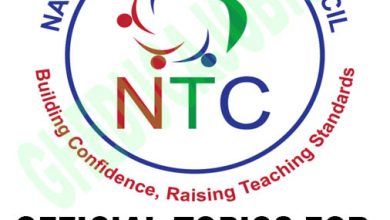
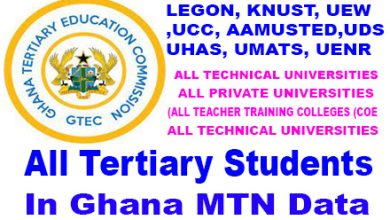

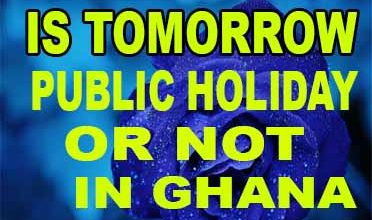
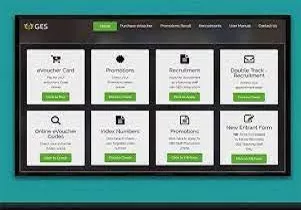
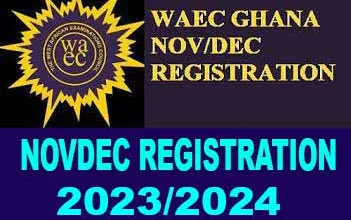
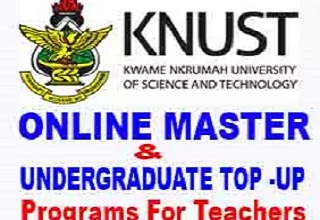
One Comment